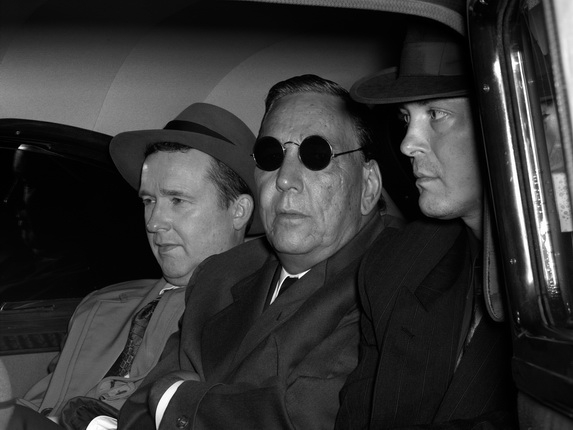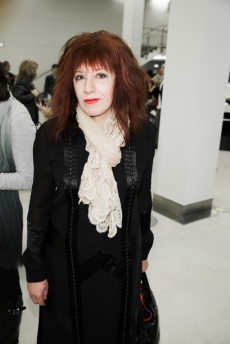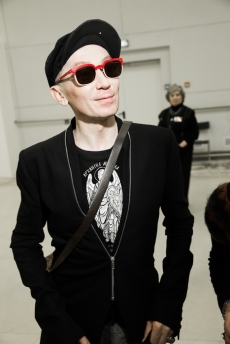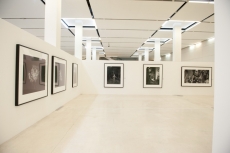STАN DOUGLAS. Midcentury Studio



Stan Douglas. Suspect, 1950, 2010. Digital fiber print mounted on Dibond aluminum. Courtesy the artist, David Zwirner, New York/London and Victoria Miro, London
Stan Douglas. Dancer I, 1950, 2010. Digital fiber print mounted on Dibond aluminum. Courtesy the artist, David Zwirner, New York/London and Victoria Miro, London
Stan Douglas. Hockey Fight, 1951. Dated: 2010. Digital fiber print mounted on Dibond aluminum. Courtesy the artist, David Zwirner, New York/London and Victoria Miro, London
Moscow, 7.03.2013—3.04.2013
exhibition is over
Central exhibition hall Manege
1, Manege Square (
www.moscowmanege.ru
Share with friends
For the press
Since the late 1980s, Stan Douglas has created films, photographs, and installations that reexamine particular locations or past events. His works often take their points of departure in local settings, from which broader issues can be identified. Making frequent use of new as well as outdated technologies, Douglas appropriates existing Hollywood genres (including murder mysteries and the Western) and borrows from classic literary works (notably Samuel Beckett, Herman Melville, and Franz Kafka) to create ready-made contextual frameworks for his complex, thoroughly researched projects.
Douglas’s films, which are often randomly looped and may take days to unfold, defy straightforward expectations of narrative and authorship, while his photographs—sometimes heavily digitally retouched—deliberately eschew a linear reading. Examining the contrasts that exist between personal, subjective impressions of a given place or past event and the prevailing, «official» representation of the same location or occurrence, Douglas rethinks linguistic and aesthetic structures while at the same time grounding his works in specific material or political circumstances.
This exhibition debuts an extensive project by Douglas that chronicles the burgeoning discipline of press photography in North America during the postwar period. Douglas has assumed the role of a fictional, anonymous photographer to create a series of images hypothetically produced between
Douglas’s midcentury alter-ego revokes the career of the legendary photographer Arthur Fellig, also known as Weegee
Douglas’s black-and-white photographs offer a fragmentary portrait of the immediate postwar period in North America. They include the disturbingly casual scene of a murder victim freshly covered by the daily papers; a fight in the stands of a hockey stadium; close-up, detailed guides for how to throw a cricket ball and steal a wristwatch; a programmatic image of a dancer’s movements captured with the help of a strobe light; and a trio of men gambling in a doorway over a game of dice. Starkly lit, dark shadows and areas of black dominate most of the images, whether or not they are nighttime shots. Douglas was specifically fascinated by those elements of the image that are beyond the photographer’s control, and while his artificial lighting and staged compositions are evidently at odds with the desire for spontaneity expressed by the midcentury practitioners, many of the artist’s works have an unexpected, uncanny dimension secondary to their immediate subject matter.
Douglas was born in 1960 in Vancouver, where he continues to live and work. He was one of the first artists to be represented by David Zwirner, where he had his first American solo exhibition in 1993. Stan Douglas: Disco Angola marked his eleventh solo show at the gallery in 2012.
Douglas was awarded the prestigious Infinity Award by the International Center of Photography, New York, in May 2012. His work has been the subject of numerous solo exhibitions at prominent institutions worldwide, including The Power Plant, Toronto (2011); Staatsgalerie Stuttgart and Württembergischer Kunstverein, Stuttgart (2007); The Studio Museum in Harlem, New York (2005); kestnergesellschaft, Hanover (2004); and the Serpentine Gallery,London (2002).
Work by the artist has been included in a number of recent group exhibitions at the Solomon R. Guggenheim Museum, New York; ZKM Museum für Neue Kunst, Karlsruhe, Germany (both 2010); International Center of Photography, New York (2009 and 2008); Hirshhorn Museum and Sculpture Garden, Washington, D.C. (2008); Centre Georges Pompidou, Paris (2007); amongst others.
Major museum collections which hold works by the artist include the Art Gallery of Ontario, Toronto; Centre Georges Pompidou, Paris; The Israel Museum, Jerusalem; Museum of Contemporary Art Chicago; The Museum of Modern Art, New York; National Gallery of Canada, Ottawa; San Francisco Museum of Modern Art; Solomon R.Guggenheim Museum, New York; Tate Gallery, London; Vancouver Art Gallery; and the Walker Art Center,Minneapolis, Minnesota.































